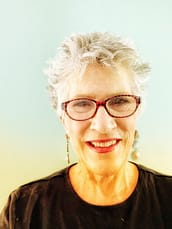For me drawing – specifically life drawing – is the foundation of my artistic training. I first started life drawing in an old elementary school turned community center in Del Mar, California.
I had the last cheap apartment near the beach – $200 a month for a house that had previously been four motel rooms. There were holes in the wall through which we could see daylight. But we were two blocks from the beach, and my then-husband – a champion surfer – could be in the Pacific waves every morning and night.
The drawing instructor taught me something that completely changed the way I made marks. He worked on us to stop thinking (the keyword is thinking) about how to draw an arm, torso, or ear (ears are challenging!) and just draw exactly what we saw without labeling it. Here is the deal: when most people attempt to draw a nose, they think, what does a nose look like? The result is nothing that looks like the person in front of them. It’s a discipline to erase all the stored-up impressions of what things look like and instead really see what’s in front of you and draw that. That’s why life drawing is such a foundational practice. No two bodies are alike, and no body is the same from minute to minute.
Learning to see things exactly as they are is essential to creative arts, problem-solving, and innovation in any pursuit. If one attacks a problem only by recalling learned responses and perceptions, the problem itself will not tell you its wisdom. If we just sit with what is and look to see all of it, its specific aspects, how things fit together, how it relates to what’s around it, etc., then that challenge starts to tell us important things about where to take it from there.
This does not mean we don’t have to learn skills and study similar problems in preparation for that moment when you let it all go and be with what is in front of you. Fertilizing the soil consistently makes it possible to see what is there now and for your right brain to seedbop you with ideas and solutions that you didn’t work hard to find. When Johann Sebastian Bach was asked about his prodigious musical talent, he responded, “I was obliged to be industrious: whoever is equally industrious will succeed equally well.”
Learning to see is also a skill to be practiced. When you are on an ordinary walk, get out of your head and really look at the things around you in real-time. When you are sitting drinking coffee on a Sunday morning, really look at your familiar surroundings as if for the first time. If you do this practice daily, you will significantly sharpen your ability to experience that unbidden seedbop that leads to fresh perspectives and innovative solutions for any challenge.

